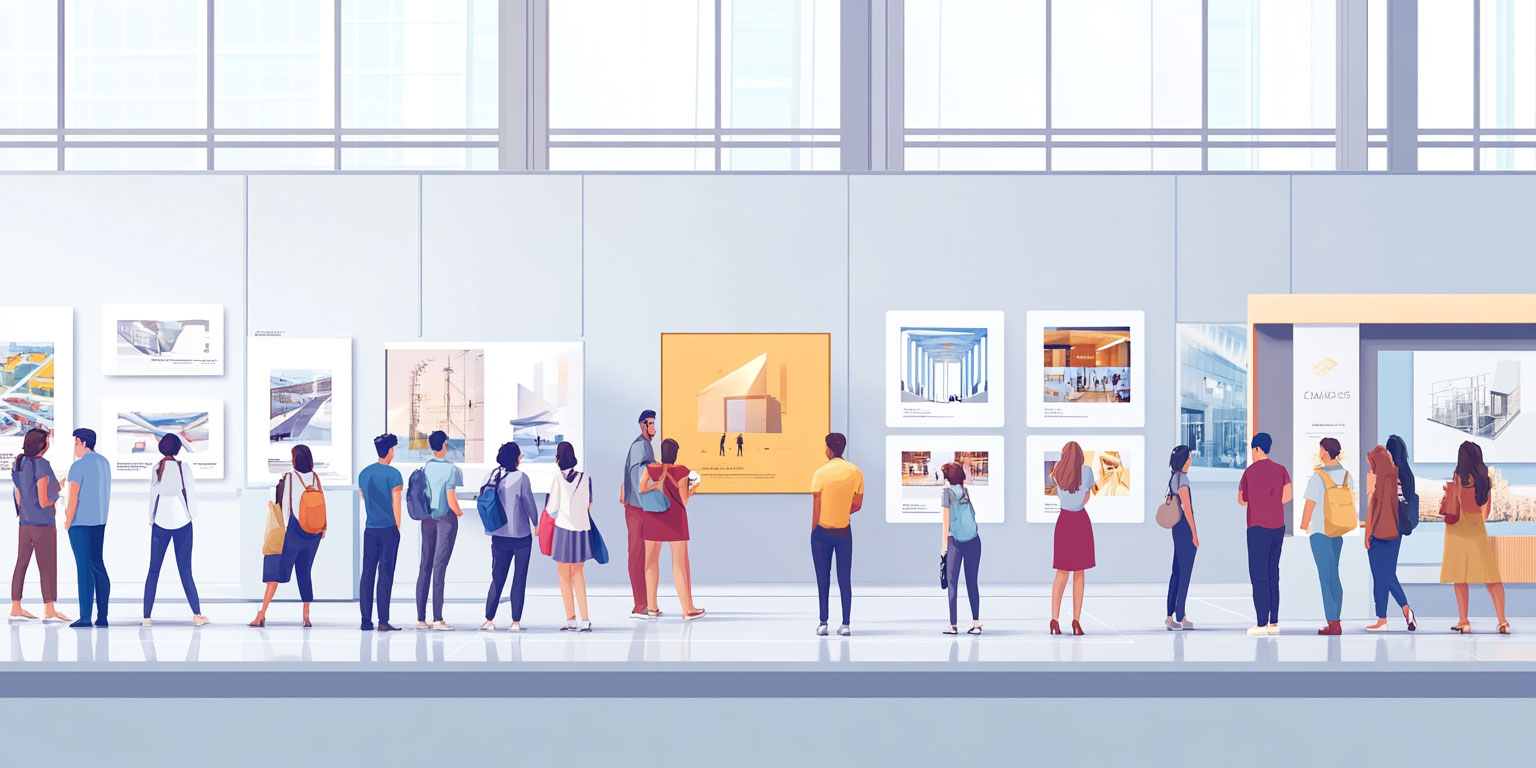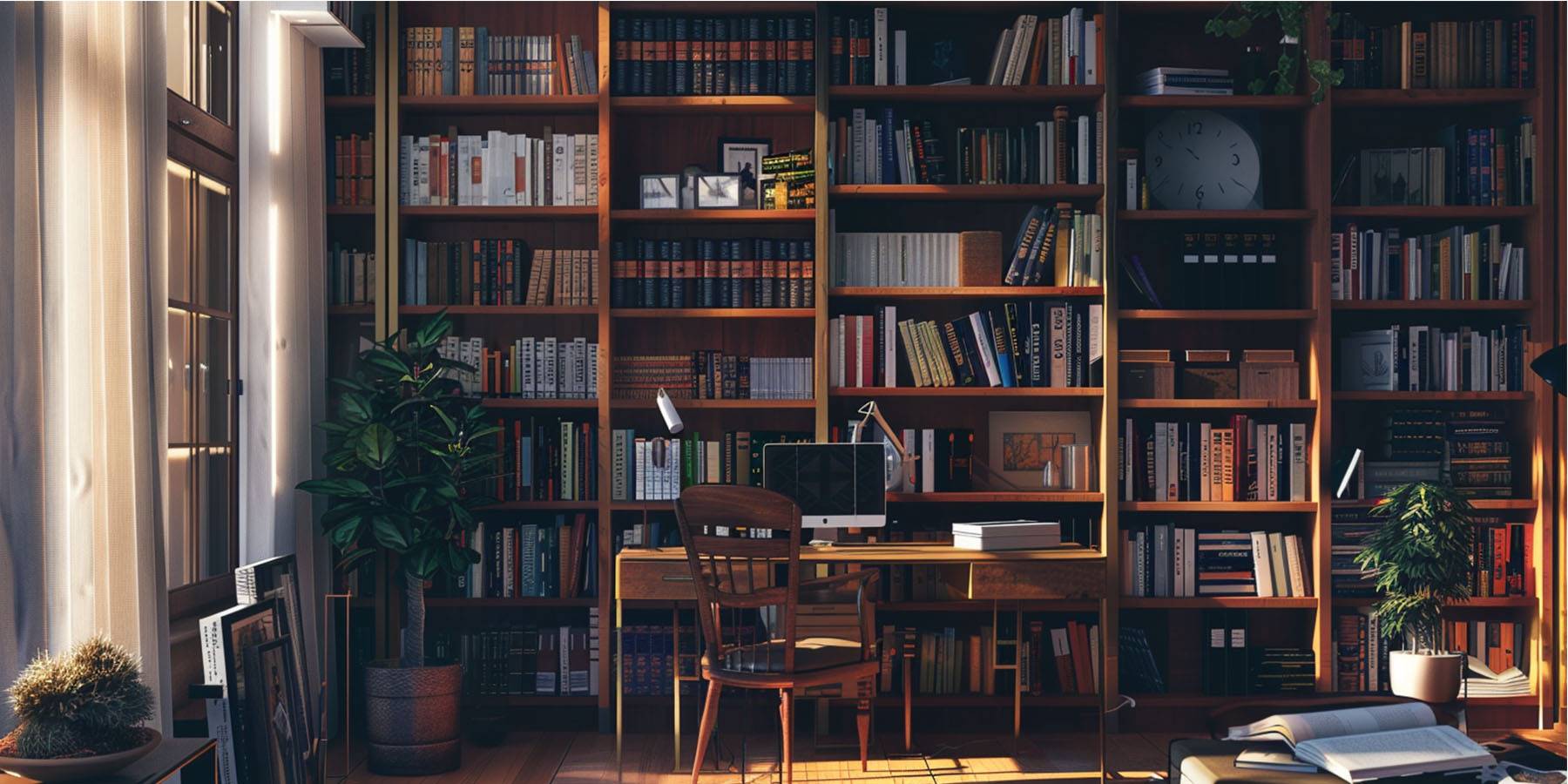Architectural journalism serves as a bridge between the world of architecture and the public, providing insights, interpretations, and critiques of built environments. While words play a crucial role in conveying these narratives, the importance of visuals in architectural journalism cannot be overstated. Visuals are not merely supplementary; they are often the core of the communication, bringing clarity, engagement, and a deeper understanding of architectural concepts. This article explores the critical role visuals play in architectural journalism, elaborating on their importance, impact, and best practices for their use.
Understanding the Role of Visuals in Architecture
The Language of Architecture: Visuals as a Medium
Architecture is a visual discipline by nature. Unlike many other fields, where words are the primary medium of communication, architecture communicates through form, space, and light. Visuals such as photographs, renderings, drawings, and diagrams are the language through which architectural ideas are expressed.
Historically, architectural journalism has relied heavily on visuals to convey the essence of a building or a design concept. From the detailed sketches of Renaissance architects to the modern-day digital renderings, visuals have always played a pivotal role in architecture. They serve as a universal language that transcends linguistic and cultural barriers, making architectural ideas accessible to a global audience.
In contemporary architectural journalism, visuals are indispensable. They do not just illustrate; they inform, persuade, and inspire. A well-crafted visual can convey complex spatial relationships, material qualities, and design intent in a way that words alone cannot. For readers, especially those without formal architectural training, visuals provide an immediate and intuitive understanding of a project.
Visuals also play a crucial role in documenting architectural history. Architectural photography, for example, has been instrumental in preserving the legacy of iconic buildings and movements. Through photographs, the essence of a building is captured, allowing future generations to study and appreciate its design. In this sense, visuals are not just tools for communication but are also valuable records of architectural history.
The Evolution of Visuals in Architectural Journalism
The role of visuals in architectural journalism has evolved significantly over time. In the early days of architectural publications, visuals were primarily limited to black-and-white photographs and hand-drawn sketches. These visuals were often static and required accompanying text to explain their significance. However, with advancements in technology, the nature of visuals in architectural journalism has transformed.
Today, architectural journalism benefits from high-resolution digital photography, 3D renderings, virtual reality (VR), and augmented reality (AR). These tools have expanded the possibilities for visual storytelling, allowing journalists to present architecture in more dynamic and immersive ways. For instance, VR enables readers to experience a building as if they were physically present, offering a level of engagement that traditional photography cannot match.
Moreover, the digital age has democratized access to visuals. Architectural journalists now have access to a vast array of digital tools and platforms to create, edit, and distribute visuals. Social media platforms like Instagram and Pinterest have become powerful channels for architectural visuals, allowing journalists to reach a broader and more diverse audience. This evolution underscores the growing importance of visuals in architectural journalism and the need for journalists to stay updated with the latest visual communication tools.
Enhancing Reader Engagement Through Visuals
Capturing Attention: The Power of Visuals in Journalism
In an age of information overload, capturing and retaining the reader’s attention is more challenging than ever. Visuals play a crucial role in this context, serving as attention magnets that draw readers into the content. A well-chosen visual can make the difference between a reader scrolling past an article or stopping to engage with it.
Studies have shown that articles with compelling visuals receive significantly more views and shares than those without. Visuals help break up the monotony of text, making articles more visually appealing and easier to digest. This is particularly important in architectural journalism, where the subject matter can be complex and technical. Visuals provide a way to simplify and enhance the reader’s experience, making the content more accessible and engaging.
The use of visuals in architectural journalism also enhances the overall aesthetic quality of the content. Architectural journalism is, after all, a form of storytelling, and visuals are an essential part of that narrative. High-quality visuals not only capture the reader’s attention but also set the tone for the article, conveying the mood and character of the architecture being discussed.
Visuals also play a key role in establishing the credibility and authority of an article. High-quality visuals suggest professionalism and attention to detail, both of which are important in building trust with the reader. In architectural journalism, where visual accuracy is critical, high-quality visuals are essential for conveying the true essence of a project. Poor-quality visuals, on the other hand, can detract from the credibility of the article and the publication as a whole.
The Role of Visuals in Social Media Engagement
Social media has become an increasingly important platform for architectural journalism. Platforms like Instagram, Pinterest, and LinkedIn are visual-first mediums, where images and videos are the primary drivers of engagement. Architectural journalists who effectively use visuals on these platforms can significantly increase their reach and influence.
On social media, visuals are often the first thing that users see, and they play a crucial role in whether or not a post captures attention. High-quality visuals are more likely to be shared, liked, and commented on, amplifying the reach of the content. In architectural journalism, where the goal is often to showcase design excellence, striking visuals are essential for generating buzz and engagement.
Moreover, social media platforms offer various tools for enhancing and optimizing visuals, such as filters, cropping tools, and analytics. Architectural journalists can use these tools to tailor their visuals to their audience’s preferences, increasing the likelihood of engagement. By analyzing the performance of visuals on social media, journalists can also gain insights into what types of visuals resonate most with their audience and adjust their strategies accordingly.
Communicating Complex Ideas Through Visuals
Visuals as Tools for Simplifying Complexity
Architecture is a complex field that often involves intricate concepts, technical details, and abstract ideas. For readers who are not architects or designers, understanding these complexities can be challenging. This is where visuals play a critical role. Visuals have the unique ability to simplify and clarify complex ideas, making them more accessible to a broader audience.
In architectural journalism, visuals are often used to break down complex concepts into more digestible parts. For example, floor plans can help readers understand the layout of a building, while cross-sections can reveal how different spaces interact with one another. Diagrams and infographics can also be used to explain technical details, such as structural systems or material properties, in a way that is easy to understand.
One of the most significant advantages of using visuals to communicate complex ideas is that they can convey information quickly and efficiently. While it might take several paragraphs of text to explain a concept, a single visual can often communicate the same information in a fraction of the time. This is particularly important in online journalism, where readers often skim content and may not have the time or patience to read lengthy explanations.
Types of Visuals and Their Impact
Different types of visuals serve different purposes in architectural journalism, and understanding these distinctions is key to using visuals effectively. Here are some of the most common types of visuals used in architectural journalism and their respective impacts:
- Photographs: Photographs are perhaps the most common type of visual used in architectural journalism. They provide a realistic representation of a building or space, capturing its appearance, atmosphere, and context. Photographs are particularly effective for conveying the aesthetic qualities of architecture, such as light, color, texture, and scale.
- Renderings: Renderings are digital images that depict what a building or space will look like once completed. They are often used in articles about projects that are still in the design or construction phase. Renderings are valuable because they allow readers to visualize a project before it is built, providing a glimpse into the architect’s vision.
- Drawings: Architectural drawings, such as floor plans, elevations, and sections, are essential tools for communicating the technical aspects of a design. These drawings provide a detailed and precise representation of a building’s layout, structure, and dimensions. They are particularly useful for readers who want to delve deeper into the technical aspects of a project.
- Diagrams and Infographics: Diagrams and infographics are used to explain complex ideas or data in a simplified and visually appealing way. They can be particularly effective for explaining technical concepts, such as structural systems, material properties, or environmental performance. Infographics can also be used to present data in a visually engaging way, making it easier for readers to grasp trends and patterns.
- Videos: Videos are increasingly being used in architectural journalism to provide dynamic and immersive experiences. Videos can capture the movement through a space, the play of light over time, or the construction process of a building. They offer a level of engagement and immersion that static images cannot match.
Each type of visual has its strengths and limitations, and the choice of which type to use depends on the content of the article and the needs of the audience. In many cases, a combination of different types of visuals can be used to provide a more comprehensive and engaging presentation of the architecture being discussed.
Case Studies and Examples of Visuals in Architectural Journalism
Successful Use of Visuals in Architectural Journalism
To fully appreciate the impact of visuals in architectural journalism, it is helpful to examine case studies of successful articles that have effectively used visuals to enhance their content. Here are a few examples of how visuals have been used to great effect in architectural journalism:
- Case Study 1: The Sydney Opera House – A Photographic Journey
This article, published in a leading architectural journal, used a series of high-resolution photographs to document the Sydney Opera House from various angles and at different times of the day. The photographs captured the building’s iconic form, its relationship with the surrounding landscape, and the play of light on its surfaces. The visual narrative provided readers with a deep understanding of the building’s design and its significance as a cultural landmark. - Case Study 2: Zaha Hadid’s Futuristic Designs – A Visual Exploration
In this article, the journalist used a combination of renderings and diagrams to explore the innovative designs of Zaha Hadid. The visuals highlighted the fluid forms and dynamic geometries that characterize Hadid’s work, while the diagrams explained the underlying design principles. The visuals not only illustrated the architect’s unique approach but also made complex design concepts more accessible to readers. - Case Study 3: Sustainable Architecture – Infographics on Environmental Impact
This article focused on the environmental impact of various architectural projects. The journalist used a series of infographics to present data on energy consumption, carbon emissions, and material use in a visually engaging way. The infographics made it easy for readers to compare the sustainability performance of different projects, driving home the importance of sustainable design practices.
These case studies demonstrate how visuals can be used to enhance the storytelling in architectural journalism. By carefully selecting and integrating visuals, journalists can create more engaging, informative, and memorable content.
The Challenges and Best Practices for Using Visuals in Architectural Journalism
Overcoming Challenges in Using Visuals
While visuals are undeniably powerful tools in architectural journalism, their use is not without challenges. Some of the common challenges include:
- Copyright Issues: One of the biggest challenges in using visuals is ensuring that they are legally obtained and properly credited. Using copyrighted images without permission can lead to legal issues and damage the credibility of the publication. Journalists must be diligent in sourcing visuals from reputable sources and obtaining the necessary rights and permissions.
- Cost of High-Quality Visuals: High-quality visuals, especially professional photography and renderings, can be expensive to produce. This can be a barrier for smaller publications or freelance journalists. However, there are ways to mitigate these costs, such as collaborating with architects and designers who may provide visuals in exchange for exposure.
- Balancing Text and Imagery: Another challenge is finding the right balance between text and visuals. While visuals are important, they should not overwhelm the article. The text should still play a central role in conveying the narrative, with visuals serving to enhance and complement the written content. Striking this balance requires careful editorial planning and a clear understanding of the article’s objectives.
- Technical Issues: Technical challenges, such as file size, resolution, and format, can also arise when using visuals. Large image files can slow down website load times, negatively impacting user experience and SEO. Journalists must be mindful of optimizing visuals for web use, ensuring that they are appropriately sized and compressed without compromising quality.
Best Practices for Sourcing, Selecting, and Integrating Visuals
To effectively use visuals in architectural journalism, it is important to follow best practices in sourcing, selecting, and integrating visuals into articles. Here are some key considerations:
- Sourcing Visuals: Journalists should source visuals from reputable and legal sources. This can include professional photographers, design firms, stock photo agencies, and open-source platforms. It is important to verify the authenticity and rights associated with the visuals before using them in an article.
- Selecting Visuals: When selecting visuals, journalists should consider the purpose of the article and the needs of the audience. The visuals should be relevant, high-quality, and aligned with the article’s narrative. It is also important to consider the diversity of visuals, using a mix of photographs, renderings, drawings, and infographics to provide a comprehensive visual experience.
- Integrating Visuals: Visuals should be seamlessly integrated into the article, enhancing the overall flow and readability of the content. Captions and annotations can be used to provide additional context and information about the visuals. Journalists should also consider the layout and design of the article, ensuring that the visuals are placed in a way that supports the narrative and engages the reader.
- Optimizing Visuals for Web Use: To ensure that visuals do not negatively impact website performance, journalists should optimize visuals for web use. This includes resizing and compressing images to reduce file size, using appropriate file formats (such as JPEG for photographs and PNG for graphics), and ensuring that visuals are responsive and load quickly on all devices.
By following these best practices, architectural journalists can effectively use visuals to enhance their articles, engage their audience, and communicate complex ideas with clarity and impact.
The Future of Visuals in Architectural Journalism
Emerging Trends and Technologies
As technology continues to evolve, so too does the role of visuals in architectural journalism. Several emerging trends and technologies are set to shape the future of visual communication in this field, offering new opportunities and challenges for journalists.
- Virtual Reality (VR) and Augmented Reality (AR): VR and AR are revolutionizing the way architectural projects are presented and experienced. VR allows users to immerse themselves in a virtual environment, experiencing a building or space as if they were physically present. AR overlays digital information onto the physical world, enhancing the real-world experience with additional context and data. These technologies offer new ways for architectural journalists to engage their audience, providing immersive and interactive visual experiences.
- Artificial Intelligence (AI) in Visual Content Creation: AI is playing an increasingly important role in visual content creation. AI-powered tools can generate realistic images, enhance photo quality, and even create entire visual narratives based on text input. For architectural journalists, AI offers new possibilities for creating and customizing visuals, making it easier to produce high-quality content at scale.
- 3D Modeling and Printing: 3D modeling and printing are becoming more accessible and widely used in architecture. Journalists can use 3D models to create interactive visual content, such as virtual tours or animations, that provide a deeper understanding of architectural designs. 3D printing also allows for the creation of physical models that can be photographed or filmed for use in articles.
- Social Media and Visual Storytelling: Social media platforms are increasingly becoming the primary channels for visual storytelling in architecture. Platforms like Instagram, Pinterest, and TikTok prioritize visual content and offer new ways for journalists to reach and engage their audience. Understanding how to effectively use these platforms is becoming essential for architectural journalists.
The Growing Importance of Visual Literacy
As visuals become more central to architectural journalism, the need for visual literacy is also increasing. Visual literacy refers to the ability to interpret, analyze, and create visual content. For architectural journalists, visual literacy is crucial for understanding how to use visuals effectively, selecting the right visuals for a given context, and communicating complex ideas through images.
Visual literacy also involves understanding the ethical implications of visual content, such as issues of representation, bias, and manipulation. As the use of AI and digital tools increases, journalists must be aware of the potential for visuals to mislead or distort reality. Ensuring that visuals are used ethically and accurately is essential for maintaining the credibility and integrity of architectural journalism.
Conclusion
Visuals are not just an accessory in architectural journalism; they are an essential part of the narrative. They enhance understanding, engage readers, and communicate complex ideas in ways that words alone cannot. As technology continues to advance, the role of visuals in architectural journalism will only grow, offering new opportunities for innovation and creativity.
For architectural journalists, mastering the art of visual communication is key to staying relevant and effective in a rapidly changing media landscape. By understanding the importance of visuals, overcoming challenges, and following best practices, journalists can create compelling and impactful content that resonates with their audience and contributes to the ongoing dialogue in the field of architecture.
References:
- “Visual Storytelling in Architecture: The Role of Photography and Renderings” – Rethinking The Future
- “The Evolution of Architectural Journalism in the Digital Age” – Architectural Digest
- “The Future of Architecture: Virtual Reality and Augmented Reality” – ArchDaily




